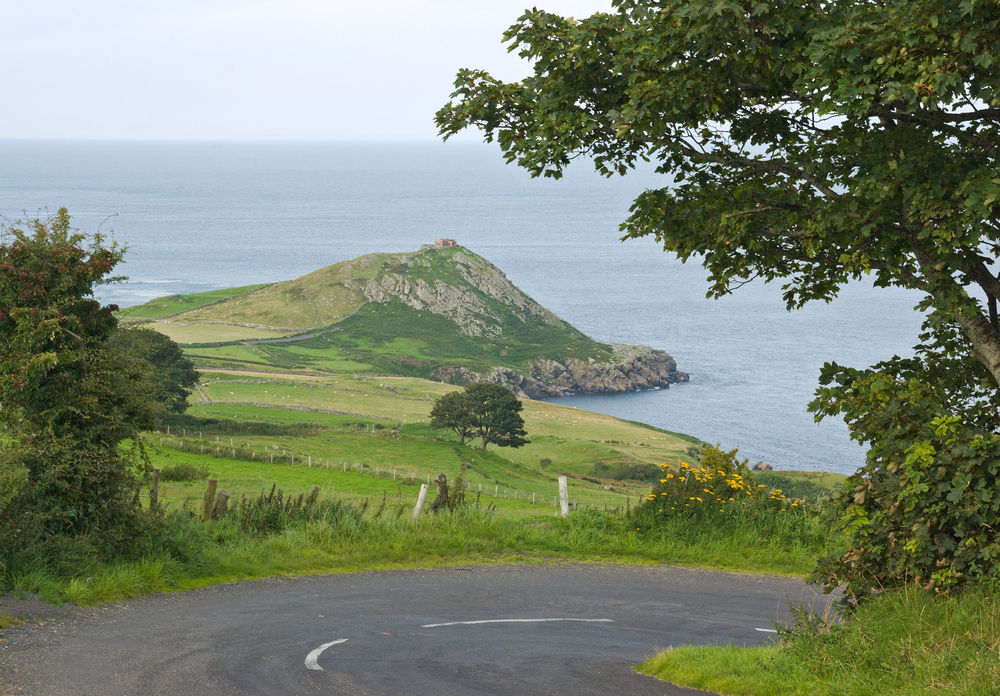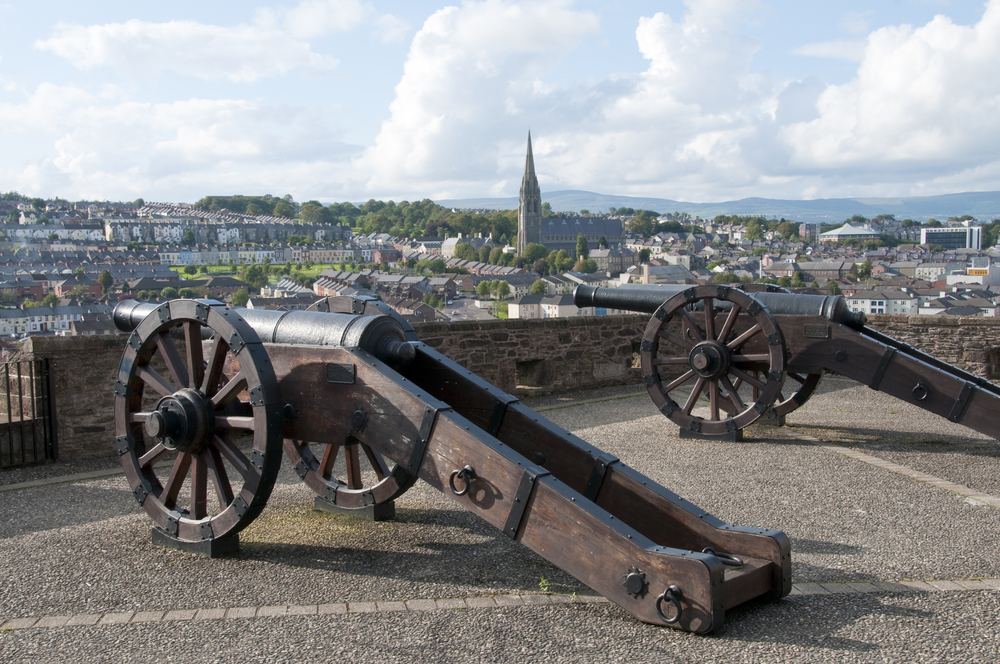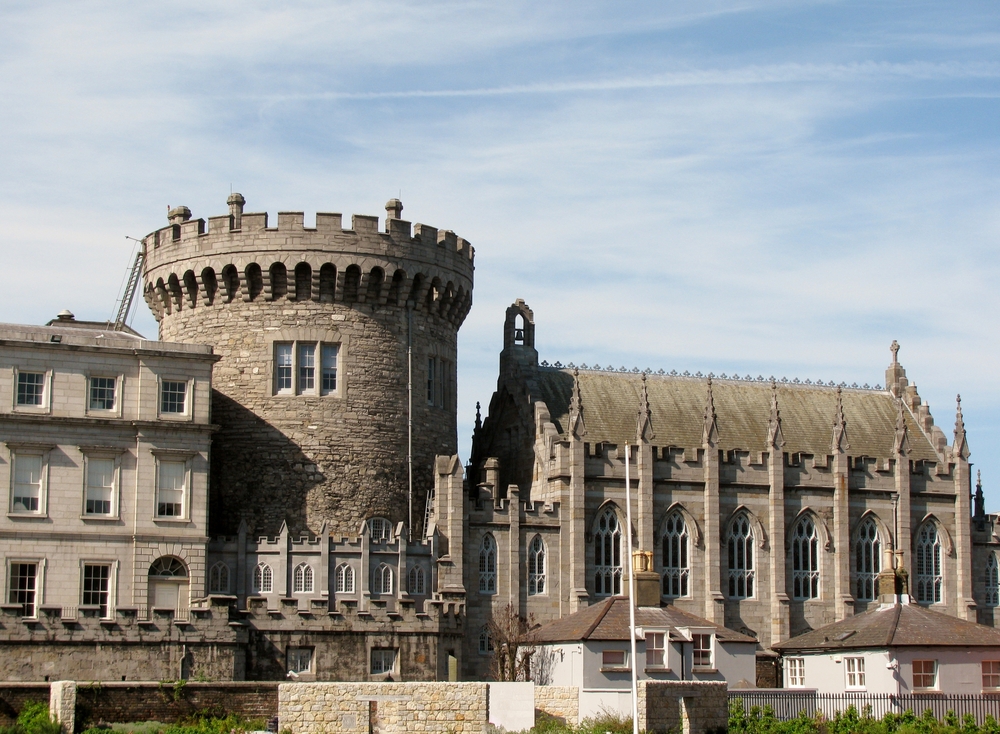2012 London Olympic Torch Route: Week 3 Sights

2012 Olympic Torch Route

After winding its way through Wales, the 2012 London Olympics torch run heads from Liverpool across the Irish Sea to the Isle of Man and Northern Ireland, with spectacular sights along the way, before returning to the island of Great Britain in Scotland.
OurAmazingPlanet will be taking you on a sight-seeing journey along with the torch week-by-week until the beginning of the Games of the XXX Olympiad, which runs from July 27 through Aug. 12, 2012. Here, we travel along the route for week 3. Make sure to come back to see where the torch goes next!
(See sights along the torch route from week one and week two. In the image above, Torchbearer John Simpson carries the Olympic Flame on the Torch Relay leg through the English town of Much Wenlock, where the precursor to the modern Olympics was held.)
Isle of Man Day 15

From its last stopping point in Liverpool, the torch carries on this week to the Isle of Man, which lies in the Irish Sea, roughly halfway between Great Britain and Ireland.
The island may be small, but it boasts plenty of fascinating sights. The Braaid is the remains of an Iron Age round house and two Norse long houses in the parish of Marown that show the mix of the two styles. It is the only Manx example of a Celtic farmstead taken over and adapted by the Vikings for their own use (Celts and Vikings were the main influencers of Manx culture).
Peel Castle, in Peel on St. Patrick's Isle, and Castle Rushen, situated at the centre of Castletown (pictured above), are medieval fortresses that lay testament to the conflicts for control of the island between Norse, English and Scots. The central stone keep of Castle Rushen dates from the 13th century, and it was there that the last Viking King of Mann died in 1265. The remains of a buried woman (called "The Pagan Lady") were found at Peel Castle; she was buried with a rich trove of objects including knives, sewing equipment and beads from exotic location.
Antrim Coast Road Day 16

After the torch arrives in Northern Ireland it will travel along the Antrim Coast Road (the A2) for part of its journey.
This road, regarded as one of the most scenic in Ireland, winds through scenic countryside, passing a number of Ireland's most well-known attractions. The road passes through the Black Arch, a short tunnel through a rocky outcrop, near the town of Larne, and the Red Arch near Cushendall.
Along parts of the road lie 300-foot (100-meter) cliffs with the sea on the other side. The road passes through the Glens of Antrim, nine beautiful valleys that are good for hiking and by Torr Head, where you can see Scotland, which is only about 16 miles (26 kilometers) away.
The road also passes by White Rock Beach, with its famed white cliffs and rock formations, as well as the Giant's Causeway, which you can read more about in the next slide.
Giant's Causeway Day 16

This coastal feature looks like it could be manmade, but it's all the work of nature.
The causeway is made of 38,000 columns of basaltic rock, mostly hexagonal in shape, that formed 60 million years ago. They stretch far out into the sea and some stand as high as 36 feeet (12 meters).
Local legend has it that the causeway was created by the giant Finn McCool so that he could cross the sea to Scotland and confront his rival. But the true source of the spectacular feature is volcanic in nature: The Earth was cracked open and lava forced its way out; as it cooled, cracks traveled through the rock producing the columns. Later eruptions buried the columns; they were slowly revealed as erosion wore away the overlying rock over millions of years.
Londonderry City Walls Day 17

The walls that surround the city of Londonderry (or Derry) were built during the early 1600s and large portions of them still stand today, making the city one of the best preserved walled cities in Europe.
The walls were constructed to protect Protestant English and Scottish settlers and they have endured as a strong symbol of the colonial city and the sometimes contentious history of the area. They still dominate much of the city's skyline.
Originally there were only four entrances, or gates, into the city, with more added at later times. The walls were restored in the 1970s and some sections were opened up to the public for the first time in centuries.
Visitors can walk the full circle of the walls today and revisit its history.
Dublin Castle Day 19

From Northern Ireland the torch will take a quick jaunt to Dublin in the Republic of Ireland. Of the many things to do and see in Dublin, one is Dublin Castle, which has been an important part of Irish history for more than 800 years.
The city actually gets its name from the Dubh Linn or Black Pool in the present-day Castle Gardens.
In the 10th century, the ruling Vikings had a fortress on the site. The Normans were the next occupiers of the area there is archaeological evidence of wood and stone castle from the 11th century at the site. King John of England commanded that a stronger castle be built in the early 1200s.
The Record Tower is the last remaining medieval tower of the castle (and in the entire city). The castle underwent much change from neglect and alterations over the centuries; much of the castle dates from improvements built during the Georgian era. All of these layers of Ireland's history can be viewed at the castle.
Isle of Arran Day 21

After its Irish jaunt, the torch travels back over the Irish Sea and returns to Great Britain along the west coast of Scotland. Just offshore lie several islands, including Arran, the largest in the Firth of Clyde and a place of intense geologic interest.
An outcrop on the northeast of the island called Hutton's unconformity was the feature that inspired James Hutton, the "father of modern geology," to formulate a theory in the late 18th century that would change how scientists thought about how rocks were formed and the processes that shape the Earth's surface.
The beauty of the island can be seen from the Arran Coastal Way, which winds around the coastline of the island.
The torch will end this week to the northeast in Glasgow come back next week to see what Scottish sites the relay will pass by.
Get the world’s most fascinating discoveries delivered straight to your inbox.

Andrea Thompson is an associate editor at Scientific American, where she covers sustainability, energy and the environment. Prior to that, she was a senior writer covering climate science at Climate Central and a reporter and editor at Live Science, where she primarily covered Earth science and the environment. She holds a graduate degree in science health and environmental reporting from New York University, as well as a bachelor of science and and masters of science in atmospheric chemistry from the Georgia Institute of Technology.


